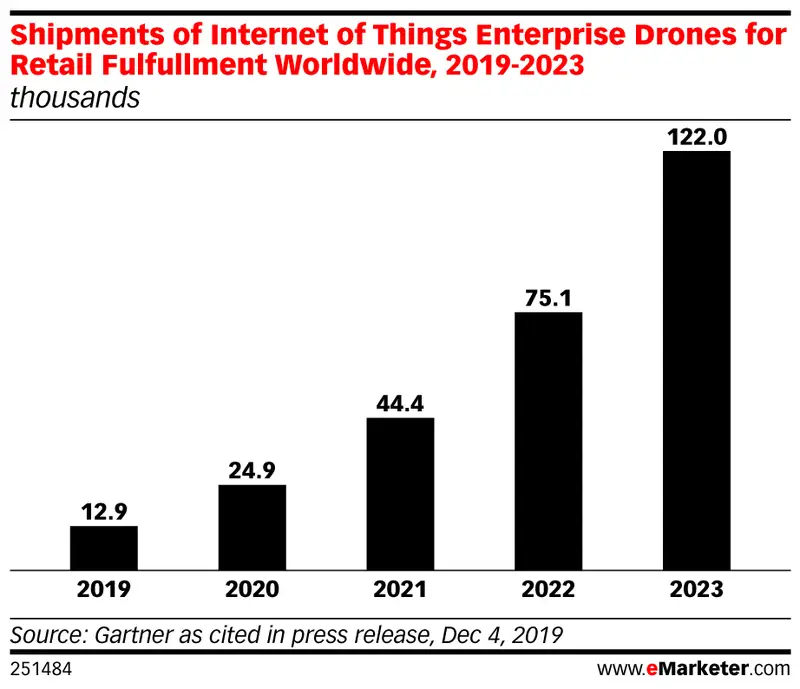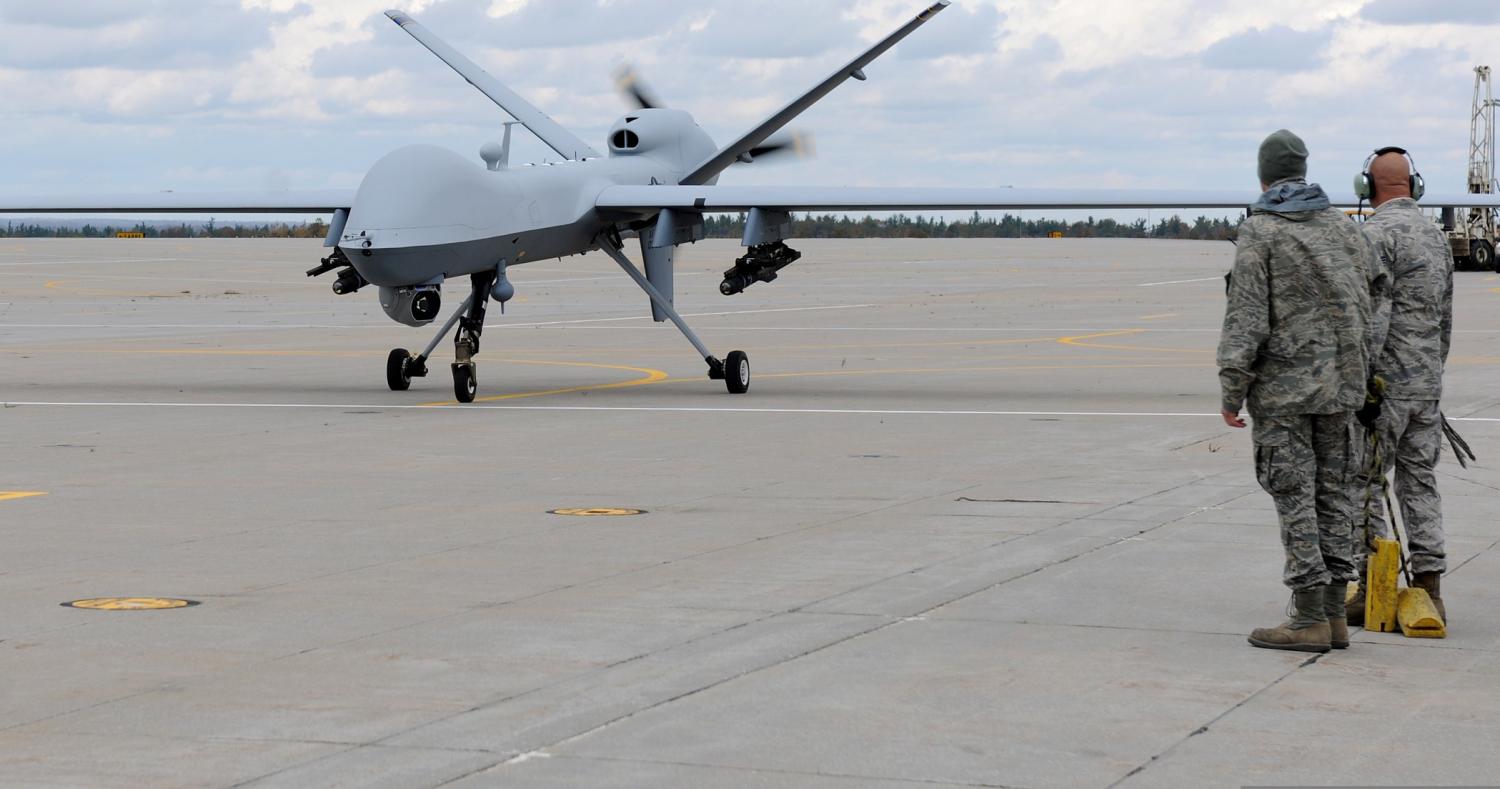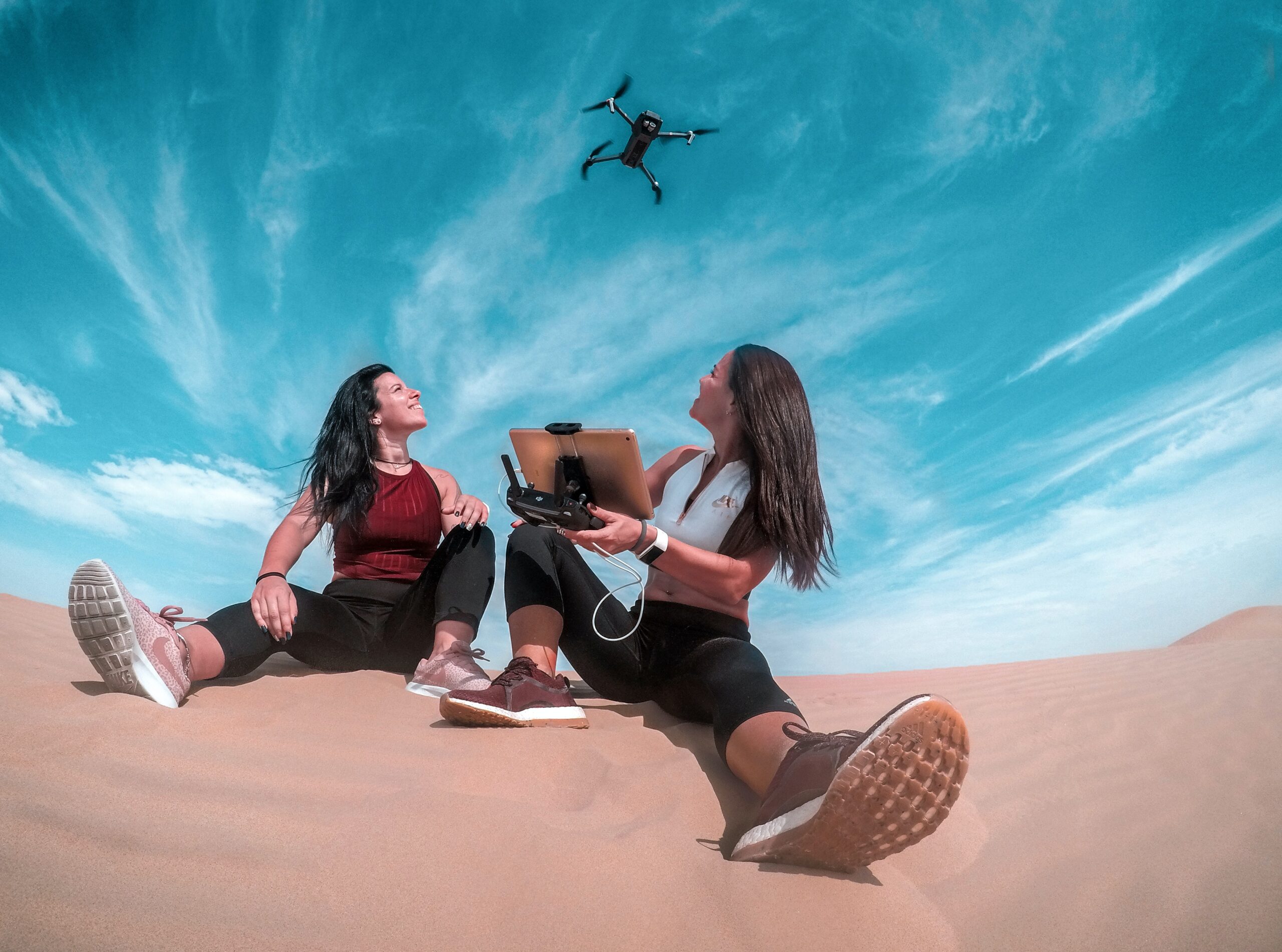Drone Technology Uses & Applications
Whether you call them Unmanned Aerial Vehicles (UAVs), Miniature Pilotless Aircraft or Flying Mini Robots, drones are rapidly growing in popularity. They are still in the infancy stage in terms of mass adoption and usage, but drones have already broken through rigid traditional barriers in industries which otherwise seemed impenetrable by similar technological innovations.

Drone shipments continue increasing worldwide
Drones have become essential for various businesses and organizations, and have managed to improve areas where industries were struggling. Drones offer many benefits including increased work efficiency, decreased workload and production costs, improved accuracy, and more. The adoption of drone technology has grown rapidly as more businesses realize its potential. Drones are controlled remotely or via smartphone app and can reach remote areas with little to no manpower needed.
Drone Technology History and Today's Uses
Drones have been around for more than two decades, but their roots date back to World War I when both the U.S. and France worked on developing automatic, unmanned airplanes. However, the last few years have seen a significant increase in drone adoption, usage expansion across industries, and global awareness.
From technically manning sensitive military areas to luring hobbyists throughout the world, drone technology has developed and prospered in the last few years.

Individuals, commercial entities, and governments have come to realize that drones have multiple useful features, which include:
- Aerial photography for journalism and film
- Express shipping and delivery
- Gathering information or supplying essentials for disaster management
- Thermal sensor drones for search and rescue operations
- Geographic mapping of inaccessible terrain and locations
- Aerial photography for journalism and film
- Express shipping and delivery
- Gathering information or supplying essentials for disaster management
- Thermal sensor drones for search and rescue operations
- Geographic mapping of inaccessible terrain and locations

Military Drone Technology
Drones have become an essential part of the military, with their usage growing exponentially in recent years. Drones are used for a variety of purposes, such as target practice, combat missions, research and development, and supervision.
The global military drone market is projected to reach $23.78 billion by 2027, according to data from Globe Newswire. This growth is due in part to the increased spending by militaries around the world on these drones. For example, a single US Predator drone costs approximately $4 million.
Drones will continue to play a major role in military operations due to their many advantages, such as reducing losses and enabling the execution of time-sensitive missions.

Commercial Drone Technology
The commercial drone industry is experiencing rapid growth as multiple industries begin to integrate drones into their daily business functions. The drone services market is expected to grow from $4.4 billion in 2018 to $63.6 billion by 2025, and consumer drone shipments are predicted to reach 29 million by 2021. This rapid growth is being driven by falling costs of customization and increasing functionality in a wide array of niche spaces. Commercial drones have the potential to generate $82 billion and 100,000 new jobs for the U.S. economy by 2025.

Personal Drone Technology
The sales of civilian drones have been on the rise in recent years, which has led to increased safety concerns from regulators and law enforcement agencies. According to Philly By Air, there were 990,000 recreational operators registered and an estimated 1.32 million recreational drones in the United States at the end of 2019.
Overall, consumers are expected to spend $17 billion on drones over the next few years. Drones come in a variety of shapes and sizes, from small and inexpensive single-rotor devices to large and expensive quadcopters with GPS, multiple camera arrays, and first-person control. While they are primarily aimed at hobbyists, these types of devices are becoming more and more available to the general public.
Drone Technology History and Today's Uses
The technology used in drones is constantly evolving, so there is always potential for new and improved drone technology. According to airdronecraze, an Amazon Services LLC affiliate advertising program website, drone technology has seven potential generations, and the majority of current technology sits in the fifth and sixth generations.
Here is the breakdown of the technology generations:
Generation 1
Basic remote control aircraft of all forms
Generation 2
Static design, fixed camera mount, video recording and still photos, manual piloting control
Generation 3
Static design, two-axis gimbals, HD video, basic safety models, assisted piloting
Generation 4
Transformative designs, Three-axis gimbals, 1080P HD video or higher-value instrumentation, improved safety modes, autopilot modes.
Generation 5
Transformative designs, 360° gimbals, 4K video or higher-value instrumentation, intelligent piloting modes.
Generation 6
Commercial suitability, safety and regulatory standards based design, platform and payload adaptability, automated safety modes, intelligent piloting models and full autonomy, airspace awareness
Generation 7
Complete commercial suitability, fully compliant safety and regulatory standards-based design, platform and payload interchangeability, automated safety modes, enhanced intelligent piloting models and full autonomy, full airspace awareness, auto action (takeoff, land, and mission execution)
